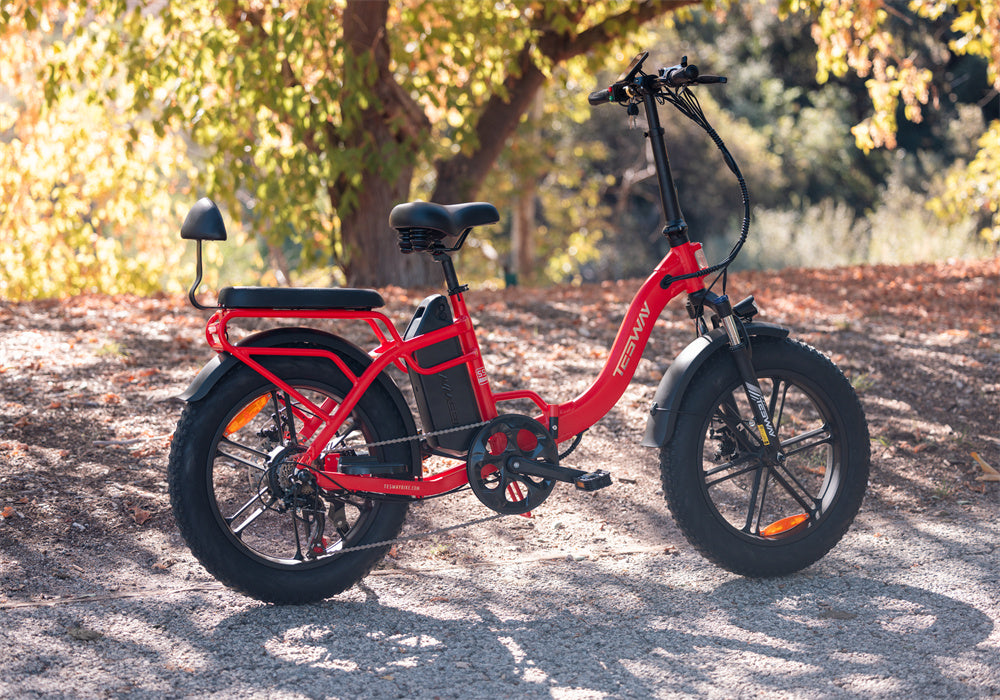Electric bikes have transformed urban mobility, offering a sustainable alternative that combines the physical benefits of traditional bicycles with the convenience of motor assistance. As e-bike popularity surges globally, understanding the specific classifications—Class 1, Class 2, and Class 3—can be crucial for potential users. These classifications affect where the bikes can be used, how fast they can go, and the type of riding experience you can expect.
Class 1 Ebikes: Pedal-Assist Only
Class 1 e-bikes, known for their pedal assist system, are equipped with a motor that helps the rider only when they are actively pedaling and automatically stops assisting when the bike reaches 20 mph. This type of e-bike is perfect for those who enjoy the traditional cycling experience but appreciate a little help on tough terrains or to reduce sweat during a commute. It's the most bike-path-friendly option due to its non-throttled nature, maintaining a low profile in terms of speed and interaction with other path users.
-
Speed Limit: Motor assistance stops at 20 mph.
- Motor Activation: Active only during pedaling.
- Battery Efficiency: Higher due to assistance only on demand.
- Regulations: Accepted on most bike paths and trails without special restrictions.

Class 2 Ebikes: Throttle-Assisted
Class 2 ebikes offer both pedal-assist and throttle modes, where the throttle provides power independently of pedaling. This feature is particularly advantageous for riders looking for easy starts from a standstill or needing a break from pedaling due to fatigue or injury. The motor also ceases to assist at 20 mph, similar to Class 1. However, the throttle component can cause some restrictions on usage in certain areas due to safety concerns, especially on crowded or narrow trails.
- Speed Limit: Motor assistance up to 20 mph.
- Motor Activation: Available via throttle without pedaling.
- Battery Usage: Potentially higher consumption due to throttle usage.
- Accessibility: Some restrictions on bike paths and trails due to throttle function.

Class 3 Ebikes: Speed Pedelec
Class 3 ebikes, or speed pedelecs, cater to those who commute over longer distances and value speed. These bikes assist up to 28 mph and are pedal-assist only, without a throttle. This higher speed capability makes them suitable for urban roads and bike lanes designed for faster traffic. However, their usage is heavily regulated. Many jurisdictions require helmet usage, minimum age limits, and in some cases, even a license.
They are generally not allowed on most trails and bike paths to ensure safety for all path users.
- Speed Limit: Assistance continues up to 28 mph.
- Motor Activation: Pedal-assist only, no throttle.
- Safety Regulations: Often requires helmets and may have age restrictions.
- Usage Limitations: Restricted access to many bike paths and trails.

Choosing the Right Class of Ebike
When you're thinking about getting an e-bike, it’s important to look at things like where you usually ride, how fast you want to go, and the local rules for e-bikes. This helps you pick the best e-bike for your daily needs and how you like to live.
For people who mostly ride in the city or parks, Class 1 e-bikes are a great choice. These bikes help you pedal but only up to 20 mph, which makes them easy to use and allowed almost everywhere you can ride a bike.
If you need a bike that can do a bit more, Class 2 ebikes, fat tire ebikes, have a throttle that lets you ride without pedaling if you want to. This is handy if you get tired and want to take a break from pedaling. The TESWAY S5 is special in this group because you can fold it up. This makes it easy to store in small places like an apartment or bring on the bus or train.
However, most people don’t need a Class 3 ebike. These bikes go faster, up to 28 mph, and are meant for long rides or people who really like going fast. They also have stricter rules and aren’t allowed on many bike paths. If you really want a fast bike, the Himiway C5 Electric Bike is a strong option. It has a powerful 750W motor for those who want speed and long rides, usually not on regular bike paths.
It’s good to know that most folks will be happy with a Class 1 or Class 2 e-bike. The TESWAY S5 is great because it folds up, has good power, and is easy to use every day. Choose a Class 3 e-bike like the Himiway C5 only if you need the extra speed and are okay with following the extra rules.
FAQs
What are the typical battery life spans for each class of e-bike?
Battery life varies widely depending on usage, but generally, Class 1 and Class 2 e-bikes can last between 20 to 70 miles per charge, while Class 3 e-bikes, due to higher speed capabilities, might have a slightly lower range per charge.
Can e-bikes be used in rainy weather?
Yes, most e-bikes are designed to be water-resistant and can be used in light to moderate rain. However, it is crucial to check the manufacturer’s guidelines and avoid deep puddles or extremely wet conditions to protect the electrical components.
Are there financial incentives for purchasing an e-bike?
Some regions offer rebates, tax credits, or other incentives to encourage e-bike purchases. Check local government and environmental websites for up-to-date information on any available incentives.







Share:
Folding Chain Locks vs. U Locks - Which is better?
Is this the perfect farm cargo bike? you never know until you try